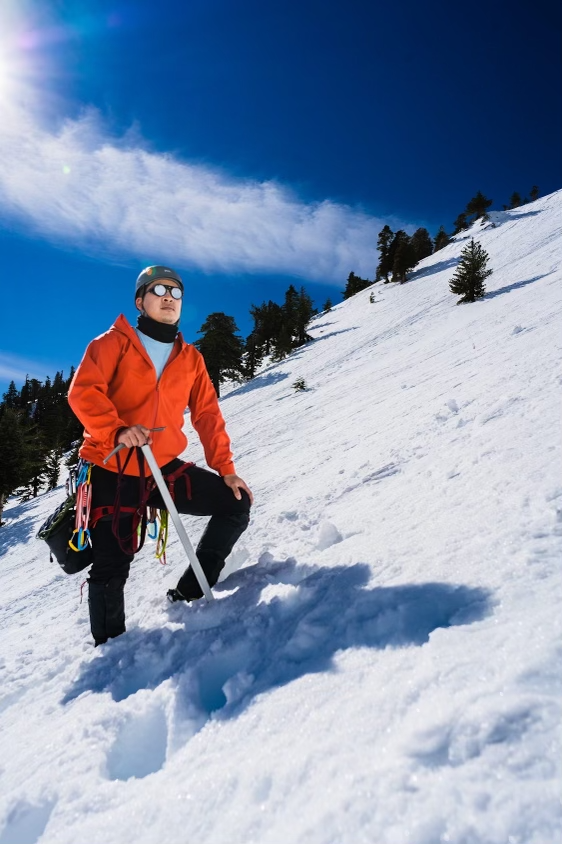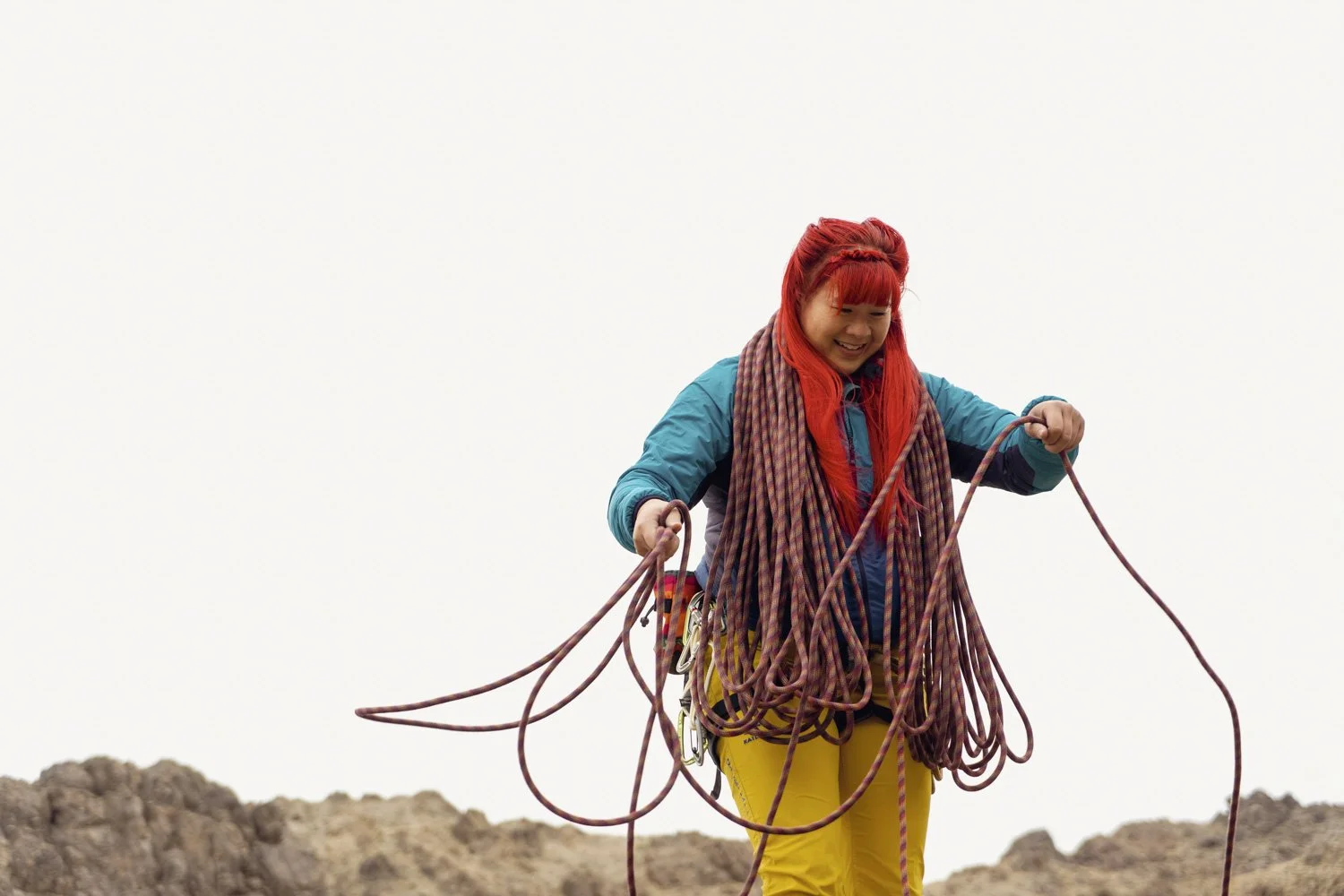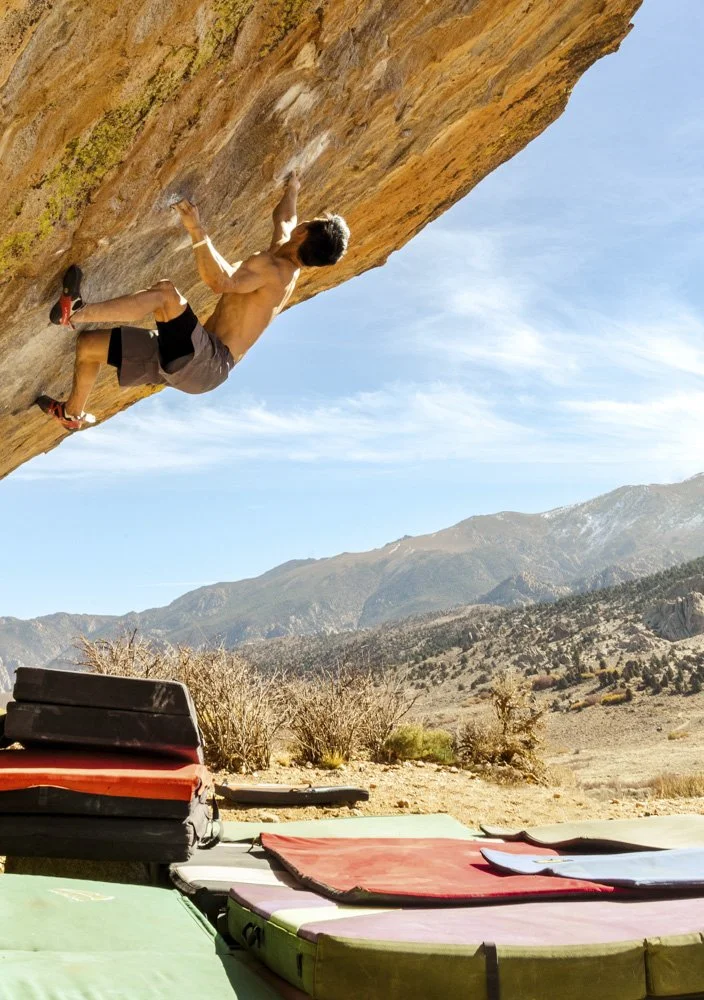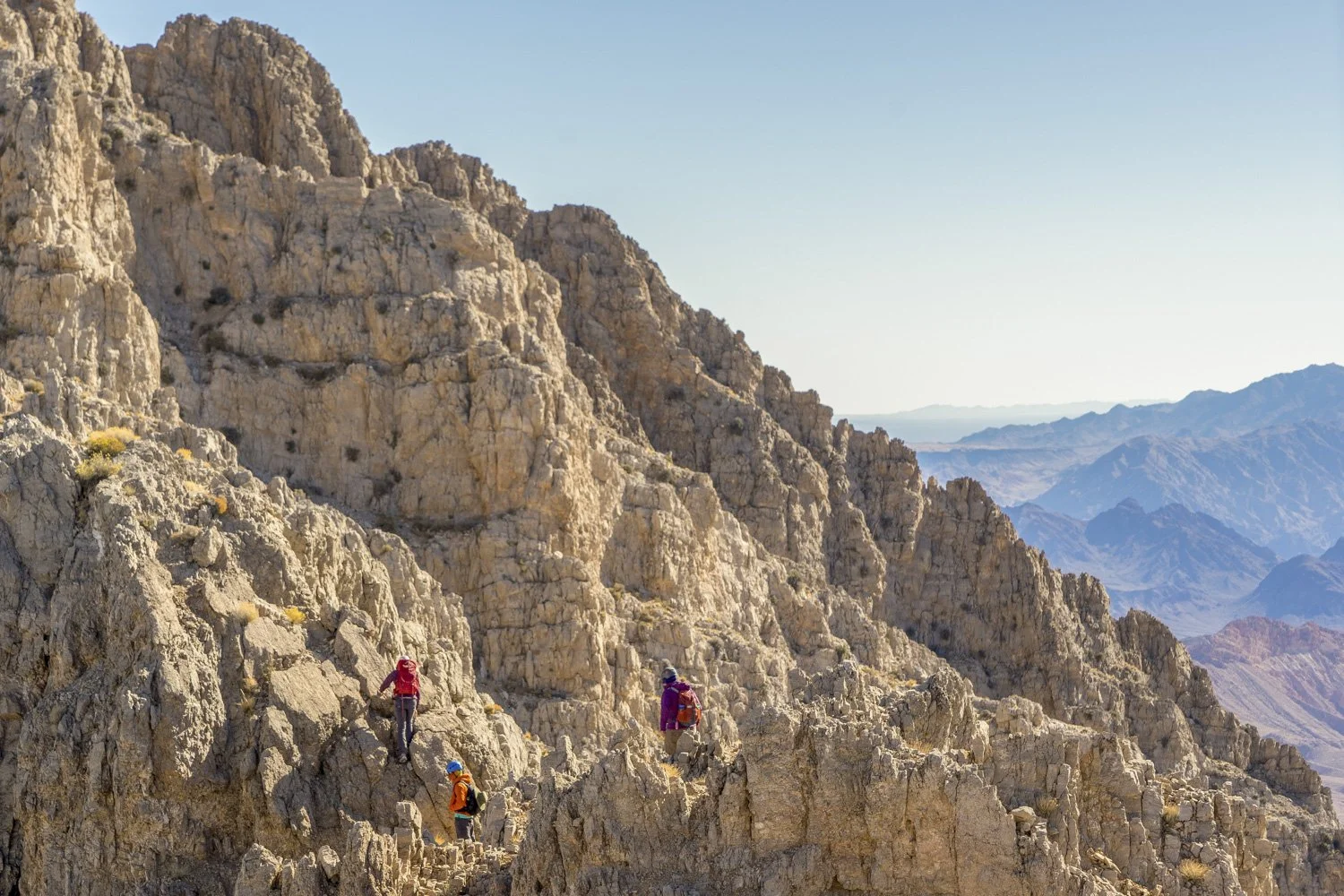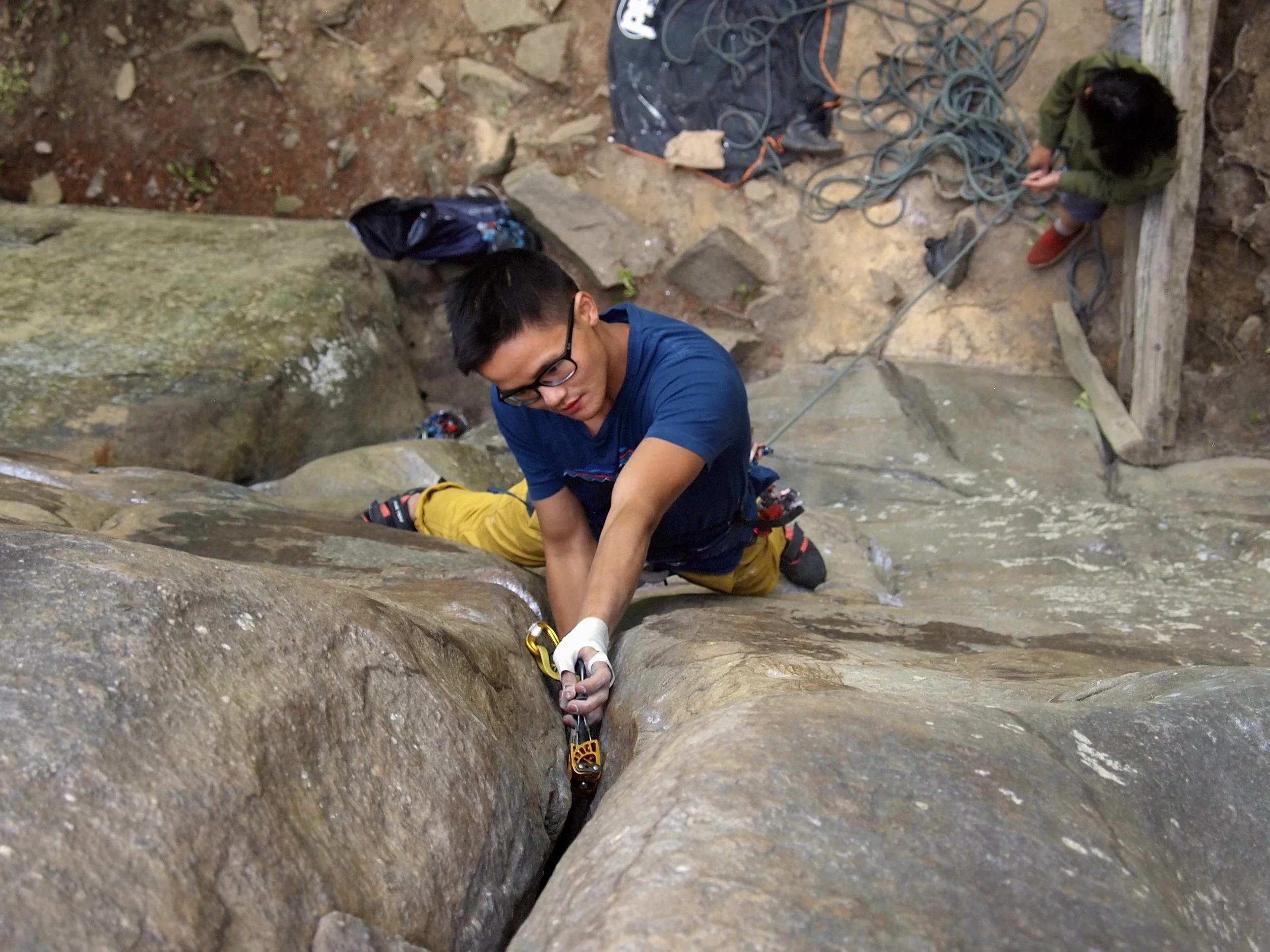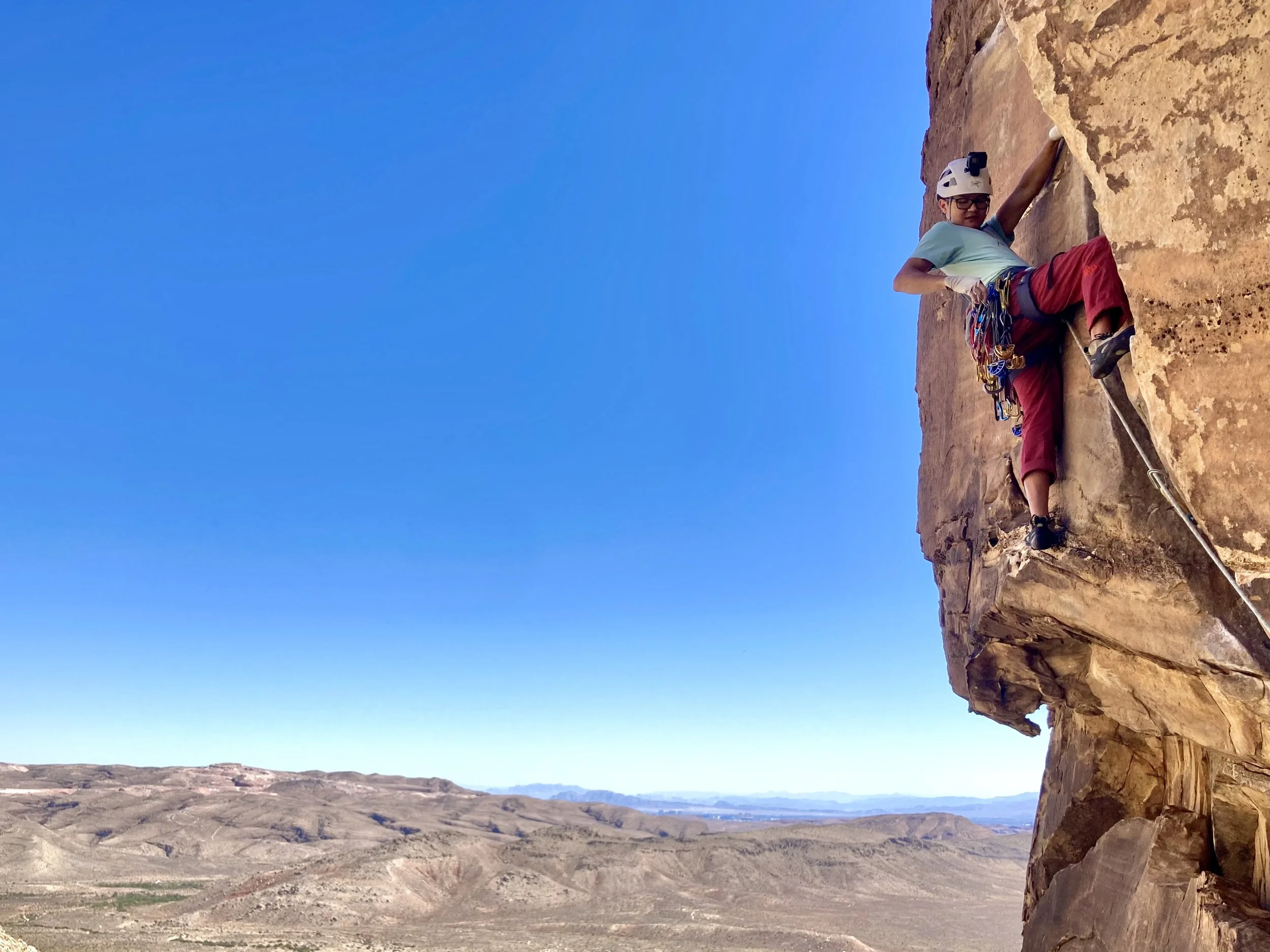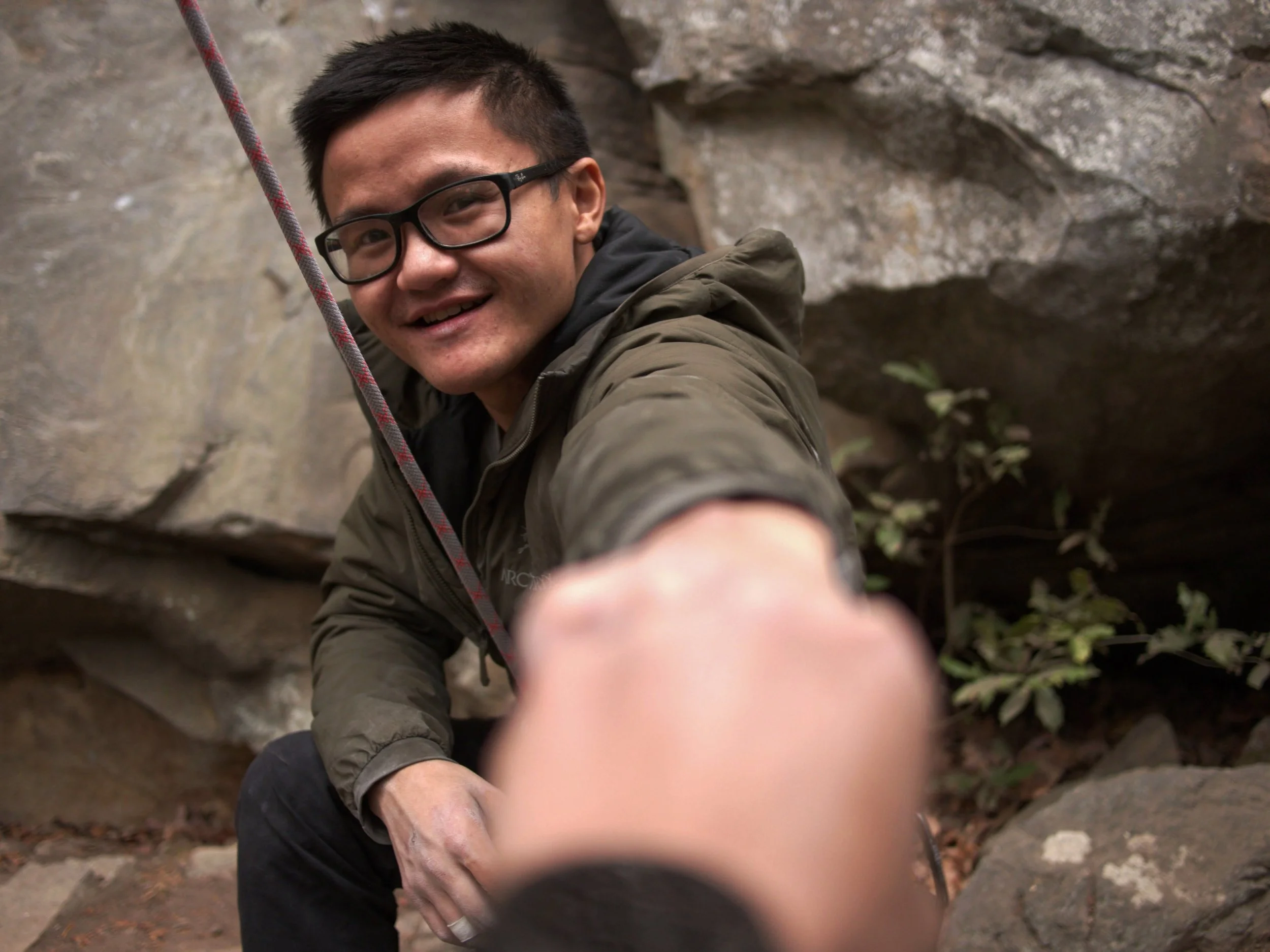Asian American Voices: Jason Quan
He says that “from his years of going outside, I don’t see as much diversity as I’d like.” As a result, he’s taken matters into his own hands, working with organizations such Climb the Gap, and the Queer Climbing Collective.
Adventure Photographer and Content Creator
by Katherine Ku and Matt Levy
Jason’s story is the third in the Asian American voices series. He is a Southern California based rock climber and photographer who often collaborates with affinity groups to promote diversity and inclusivity in our sport.
Jason started off as an internet friend I met on Facebook, but pretty soon after exchanging our first messages, we decided to meet up to climb together. (Because meeting up with strangers from the internet is something that's ok to do now right?) Anyway, I remember thinking that he must be a natural mentor, because soon after, I trusted him enough to teach me how to rappel off the edge of Corpse Wall. A few months after that, he taught me to trad climb in Ojai, pointing out the flaws in my placements and teaching me how to make my own tape crack gloves. A few months after that, we solo’d Tenaya Peak’s Northwest Buttress with another friend.
Jason is someone who chases sunrises and is actually on time (or even early) for alpine starts. He loves a good hex placement and aesthetic routes with a good view all the way up. He’s also the one of the only other Asian American adventure content creators I actually know. When we think of acclaimed Asian American adventure filmmakers and photographers, names like Jimmy Chin, Irene Yee (aka Lady Lockoff), and Matty Hong come to mind. Jason, though, is on a journey as a content creator, navigating a world that loves adventure media and an increasingly saturated media landscape.
Funny enough, Jason told me he actually started getting into outdoor sports to impress a girl who wanted to go snow camping. That relationship didn’t last, but his love for the outdoors did. He became an avid mountaineer and, eventually, a rock climber when his brother needed a belay partner about five years ago. His interest in photography bloomed even earlier, as he started capturing and sharing images from his travels.
Since then, climbing has become his way of detoxing mentally and the outdoor space has become a setting for him to both “think for himself and connect with other people.” And he’s definitely been successful at connecting with others.
Jason has come a long way from just teaching gumbies (like myself) how not to hurt themselves outside. He admits that he is “naturally inclined to mentorship,” and stresses the importance of promoting diversity in both rock climbing and photography. Currently, he is one of six mentees in Climbing for All, a program for BIPOC climbing photographers jointly hosted by Climbing Magazine and Adidas. As part of this program, he is working closely with Irene Yee, an adventure photographer and champion for women, BIPOC athletes, and LGBTQ communities.
It’s no secret to Jason that as residents of Southern California, we live in a bubble with higher than average levels of diversity. He says that “from his years of going outside, I don’t see as much diversity as I’d like.” As a result, he’s taken matters into his own hands, working with organizations such Climb the Gap, and the Queer Climbing Collective. And he doesn’t want to stop here - he wants to keep connecting with people like him and aims to become a National Geographic photographer, which he sees as the gold standard of photography.
For now, he wants to continue to help people “mesh together” and bring together people with similar goals. Jason gains a “greater sense of fulfillment…helping someone else achieve their goals,” rather than directly getting something out of it for himself. He also continues to face a struggle modern content creators know all too well - self-promoting from the ground up and continuing to learn as media trends and consumer demands rapidly evolve.
Check out some of Jason’s work in the gallery below. To keep up with him and support him, follow him on Instagram and visit his online portfolio!



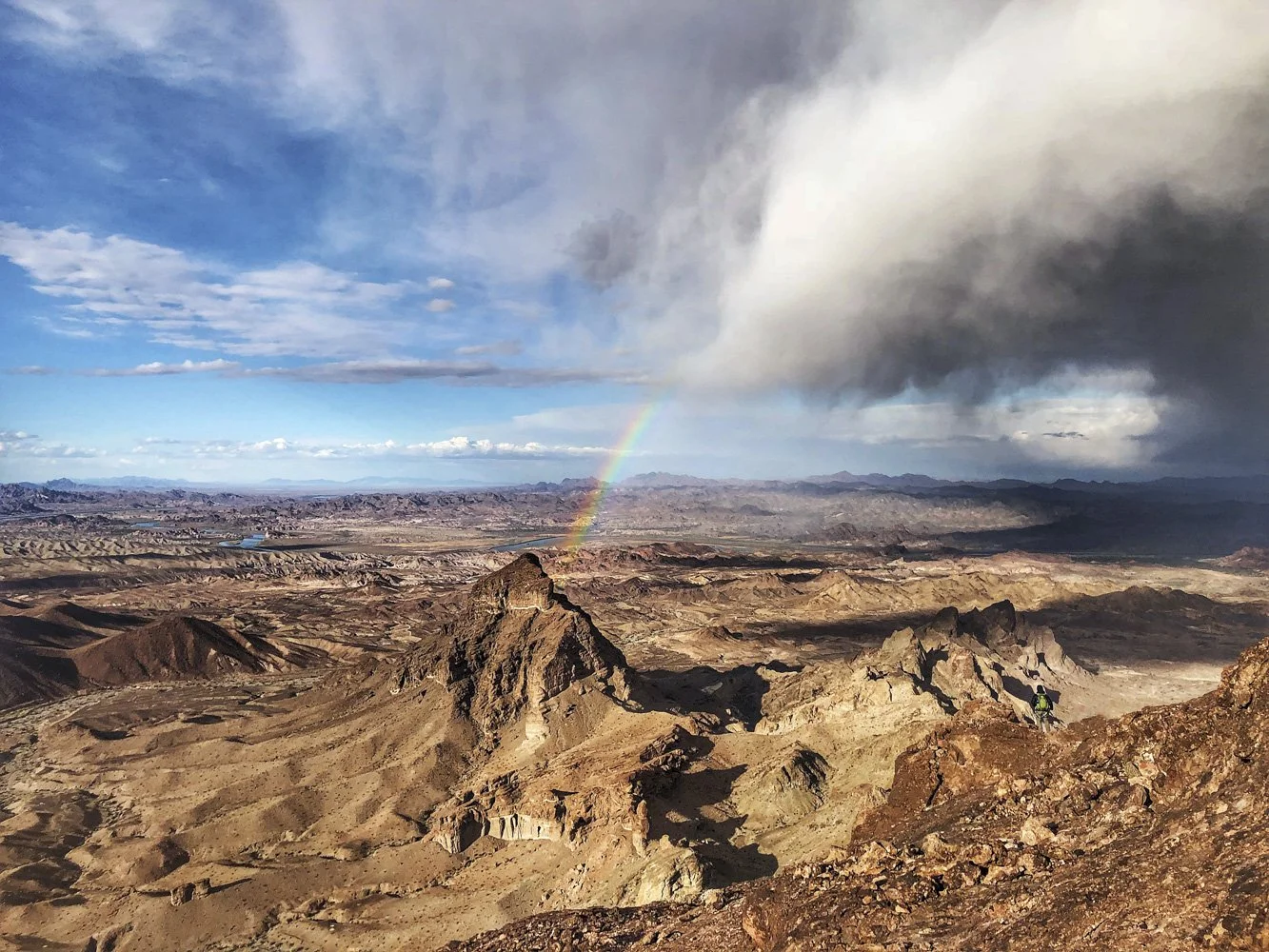








Asian American Voices: Robby Ondevilla
For Robby, it’s been “rewarding to see that people are so willing to reach out when they’re traveling,” to connect with SAC locals in a given area. “It’s important to have diversity among the rock climbing community, treat each other with the utmost respect, and lift each other up.”
Physical Therapist & Subtle Asian Climbing Administrator
by Katherine Ku and Matt Levy
Robby’s story is the second in the Asian American voices series. He, along with the Subtle Asian Climbing team, are pushing to increase diversity in rock climbing by growing an online community and by connecting AAPI climbers all over the world.
Subtle Asian Climbing started out as an offshoot of Subtle Asian Traits (SAT), a Facebook Group founded in September of 2018 that rapidly grew to become one of the largest online Asian communities in the world. SAT, a sort of embodiment of the Asian experience in the West, now has around 2 million members, and is a phenomenon that has been covered by the likes of the New York Times.
As an Asian American, I’m a member of SAT as well as a number of its subgroups, such as Subtle Asian Dating (SAD) and Subtle Asian Cooking. At first glance, these groups are just filled with lighthearted, even silly, content such as memes and everyday anecdotes. However, you’ll quickly realize these posts are extremely relatable and incredibly good at succinctly describing specific experiences of hundreds of thousands of people.
Subtle Asian Climbing (SAC) also serves this purpose, bringing together Asian rock climbers from all over the world via memes and posts highlighting members of the community. I remember watching members participate in the #dynochallenge when i first joined, scrolling through posts of people catching holds from crazy jumps. Today, SAC is over 4,600 members strong, and has grown beyond an online presence into the real world, hosting in-person meet-ups both in gyms and outdoors.
To better understand the growth behind SAC, I sat down with my friend Robby Ondevilla, who is currently an admin on the SAC Facebook page and manages the SAC Instagram account. Robby is also a rock climber of 2.5 years and physical therapist based out of New Jersey. He is thoughtful and well-spoken, considering each of my questions carefully before answering.
Robby’s climbing career started when his brother approached him with a 2-for-1 special at New Jersey Rock Gym. Like me, he was a member of several Subtle Asian groups, including SAC, where he “lurked around for a little bit,” eventually posting more frequently, looking for advice as a newer climber. His role in SAC also grew when he made a suggestion to start an Instagram page to accompany the Facebook group, and was subsequently enlisted to create and run the account.
What started out as a mere spin-off of a larger trend, has since evolved into something much more. SAC has become almost an independent affinity group, a “safe space for a lot of us with the same values.” Especially during the height of the pandemic, it became clear that the value of SAC lies in its ability to bring together individuals who are not only passionate about rock climbing, but have also had similar experiences along the way. Robby himself has encountered some uncomfortable situations as an Asian American climber. He finds himself hesitant to visit nearby crags like Haycock Mountain in Pennsylvania, as “it isn’t the most diverse area.” Other times, he finds that his “choice of place to go climb and hike” are influenced by the possibility of being the only POC, especially in rural areas where there may be safety concerns. As a BIPOC climber, it’s easy to question whether this unease is all mental, but Robby is pushing for SAC to play a larger role in validating and addressing concerns regarding diversity and safety in the outdoors.
Furthermore, Robby and the rest of the SAC team have been instrumental in helping people meet both digitally and physically. While they continue to work to create more clear cut guidelines for planning and coordinating meetups, SAC has successfully hosted meetups all over the country, from Brooklyn Boulders in NYC to Red Rock in Las Vegas. For Robby, it’s been “rewarding to see that people are so willing to reach out when they’re traveling,” to connect with SAC locals in a given area. “It’s important to have diversity among the rock climbing community, treat each other with the utmost respect, and lift each other up.”
It’s clear that Robby has played a huge role in making the SAC community the safe space it is today, as he describes how much he loves watching people connect and create lasting bonds. Many of the current SAC leaders may not work full time in the rock climbing industry, yet the future of the group is full of potential. Robby confesses it’s “hard at times to keep up with how fast SAC is growing,” but “loves how it is currently thriving.” Despite his mellow composure, Robby speaks with certainty when he expresses his excitement for SAC’s future and that he and the core team “will give it all they got.”
Asian American Voices: John Nguyen
John is a trailblazer in his own right. To him, his voice is small, and it took him a long time to realize that he was even a leader. But really, he’s forging a path for more to follow after him.
Youth Climbing Coach & AMGA-Certified Single Pitch Instructor, SCARPA Athlete Mentorship Initiative Mentee
by Katherine Ku and Matt Levy
Photos by John Nguyen, Milana Ortega, Tiffany Dang, and Katherine Ku
John’s story is the first of a series of Asian American voices in the climbing world that I wanted to understand and publish. As a member of the AAPI climbing community, I’ve met several people along the way who have changed my journey and what I thought I was capable of. There is more to be understood, and I hope that through these weekly articles, these voices are at least heard by a few more people than they would have otherwise.
I first connected with John Nguyen when he asked me for a “Vote the Outdoors” sticker and I, in turn, asked to borrow his Petzl pro-deal. Though I proceeded to lose his pro-deal, we quickly became close friends and I met him in person for the first time when I crashed at his house and multi-pitched with him when I passed through Virginia on a cross-country road trip.
John is young and addicted to Coca-Cola. He loves wearing bright colors at the gym and crag. He knows he swears too much, but does it anyway. He loves every piece of gear he owns as if it was his child. John is a lot of things, but he was definitely born to climb.
After watching Free Solo back in 2019 and then living out of a car during his first climbing trip in Utah, John fell in love and dedicated his whole life to rock climbing. Today, he’s an experienced boulderer and sport climber, aiming to climb 8a in both disciplines. He inexplicably loves crack climbing and is the proud owner of a triple rack. He coaches the youth comp team at Sportrock Climbing Center in Virginia and is an AMGA-certified Single Pitch Instructor.
For John, climbing has been about learning, teaching, and growth. He began rock climbing at a low point in his life, as just a way to exercise, but later giving him a way to “put himself in a better spot and climb out of a hole he dug for himself.” Still, he didn’t expect to become a community leader and representative for others like him at the time.
Within a year of starting to climb, he began learning about affinity groups like Subtle Asian Climbing on social media. When asked about his role in the community, he said he felt that “climbing was fairly selfish” and that he wanted to change that. To him, “there’s a lot more to it than climbing up a route.” He offered support and strengthened the foundations of a community that had built him up, the community that granted him the confidence to want more.
Though climbing is a sport that is trying to become more inclusive and diverse, it still has a long way to go. While indoor climbing is becoming more popular across the board, at least in his locale, John is often the only BIPOC climber present at the crag. After earning his SPI certification, John also excitedly posted in the Subtle Asian Climbing (SAC) facebook group (which is 4,600 members strong by the way), hoping to connect with other AAPI climbing guides. To his disappointment, his post was met with radio silence.
This, unfortunately, doesn’t really come as a complete surprise. When John decided to pursue a career in the climbing and outdoor industry, he dropped everything, including finishing up his bachelor’s degree. He spoke honestly to me, said he struggled when he started out and is still struggling, admitting that he continues to be “unsure of a lot of things.” It’s difficult to navigate the outdoor industry, which isn’t exactly known to be teeming with high-paying opportunities, especially with parents who don’t fully approve of his career choices. They push him to find a “real” job, but he is now “focusing more on happiness than stability.” John has been told repeatedly that he can’t live his dream, or even to find new dreams. These things continue to cause him anxiety, but he says he’s “pushing through it slowly but surely.” He told me that it “hasn’t destroyed him” yet and that “things are slowly falling into his lap.”
Rock climbing has caused cultural friction for John, but has also motivated him to “rekindle a connection with his culture.” He’s working on embracing his role as community leader. After earning a spot as a mentee in Scarpa’s Athlete Mentorship Initiative, John hosted an affinity meet-up with SAC as his Scarpa Capstone project. He aims to continue to introduce BIPOC climbers to the outdoors through education, eventually hoping to run clinics and create education videos on crag etiquette, safety, and more.
John is a trailblazer in his own right. To him, his voice is small, and it took him a long time to realize that he was even a leader. But really, he’s forging a path for more to follow after him. Though he proudly claims that his comp kids love him, he’s still surprised every time someone tells him that he’s made a positive impact on their life, whether it’s something as small as teaching them how to build an anchor or even inspiring them to pursue a career in the climbing industry. As someone who never thought he’d climb v5, he’s making a hell of an impact, and his voice is only getting louder.







